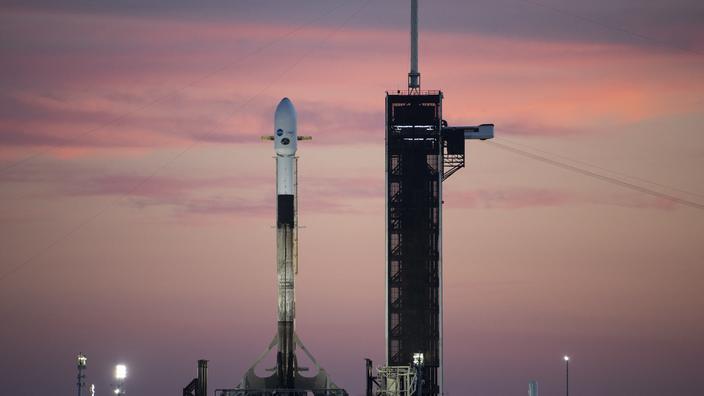NASA said Thursday it would attempt to observe the crater that will be formed by the remains of a SpaceX rocket slated to crash into the moon in early March, calling the event an
"exhilarating research opportunity."
This rocket had placed a satellite in orbit in 2015, but its second stage had then been left dormant in the cosmos, a common practice.
The trajectory of this cylindrical object has recently been modified by a passage close to the Moon, and experts have calculated that it should now cross, by chance, that of this star.
Read alsoDart, a 500 kg “dart” part to deflect an asteroid for NASA
The US space agency
is "following the trajectory of the second stage of SpaceX's Falcon 9 rocket"
, a NASA spokeswoman told AFP, confirming that the collision was scheduled for March 4, on the far side from the moon.
Unfortunately, NASA's probe currently orbiting the Moon, the Lunar Reconnaissance Orbiter (LRO),
"will not be in position to observe the impact as it happens
," she continued.
But the LRO could intervene later, by comparing photos taken before and after the date of the explosion.
NASA teams
are "assessing whether observations can be made of any changes to the lunar environment resulting from the impact, and subsequently identifying the crater formed by the impact"
, explained the spokesperson.
Finding this crater
"will be difficult and could take weeks or even months
," but
"this unique event presents an exhilarating research opportunity
," she said.
Studying the crater formed by an object of known mass and speed (in this case, four tons at more than 9000 km/h), and the material thus stirred up, could make it possible to advance selenology, the scientific study of the moon.
Rocket stages have been hurled against the Moon for scientific purposes in the past, but this is the first unintended collision detected.
Astronomer Bill Gray, creator of software to calculate the trajectories of asteroids and other objects, was the first to realize the future impact.
He believes that space junk should always be directed to the Moon when possible.
"If they hit the moon, then at least we learn something about it
," he told AFP.



